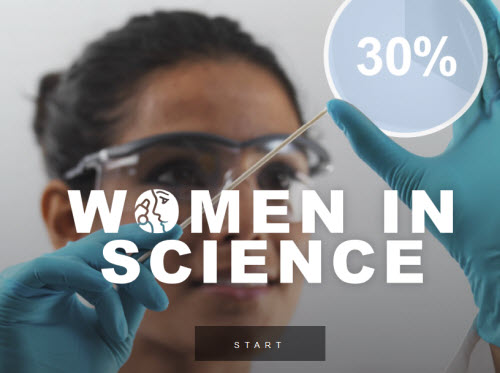New indicators are in the pipeline to help bridge the gender gap in STEM
According to UIS data, less than 30% of the world’s researchers are women. To reduce this gap, we must go beyond the numbers and identify the qualitative factors that deter women from pursuing careers in science, technology, engineering and mathematics (STEM).
In response, the UIS is developing a series of new indicators about the dynamics that shape women’s decisions to pursue STEM careers – from their educational pathways to the social factors, such as starting a family and workplace environment. The data will then be used as an evidence base to better target policies at the country, regional and global levels through a new project, known as SAGA (STEM and Gender Advancement), financed by the Swedish International Development Cooperation Agency (SIDA).
Numerous studies have found that women in STEM fields publish less, are paid less for their research and do not progress as far as men in their careers. However, there is very little data at the international or even country level showing the extent of these disparities. The new SAGA data will better identify the barriers that women face and the incentives that can be aimed at individuals and organizations to encourage more women to pursue high-level positions in STEM.
“The image of a leaky pipeline is often used to describe the fact that less than 30% of the world’s researchers are women, but if we look deeper into the data, the leaks are going to get a lot bigger,” said Martin Schaaper, UIS specialist of R&D data. “We are going to see even bigger gaps when comparing the percentages of women researchers who acquire senior grades. But to do this, we need to develop new indicators and make use of a wider range of data sources.”
Through SAGA, the UIS will be working with partners in countries and regional organizations, to develop a toolkit that includes methodologies, indicators and frameworks to produce more precise data and make better use of existing information.
For example, a module will be added to an existing survey on doctorate holders which tracks their career paths and provides insight on their career decisions and satisfaction. By comparing responses for men and women, the results will show the extent to which family decisions, financial considerations, workplace cultures and discrimination can shape their respective careers in STEM fields.
The project will also gather information on the relevant policies and incentives currently in place in countries and design a classification for STEM-related policies and policy instruments. This list will assist policymakers in identifying gaps and in mapping existing indicators to policy objectives. SAGA will also be mining online sources, such as CV databases and LinkedIn, to shed light on the professional networks and conditions that can encourage or dissuade women in STEM.
The new toolkit of methodological resources will be based on international standards so that the resulting data can be compared across countries. About 10 countries will be pilot-testing the instruments with the UIS. While the list of participants has not yet been finalised, countries such as Brazil and Chile have shown strong interest.
After the pilot phase, the goal is to integrate the new instruments at all levels – from national surveys to regional data collections and the UIS global survey on R&D statistics. By the end of the three-year project, countries will have a tested approach to find the leaks in the pipeline for women in STEM.
Explore the data on Women in Science

Additional Resources:
12/11/2015